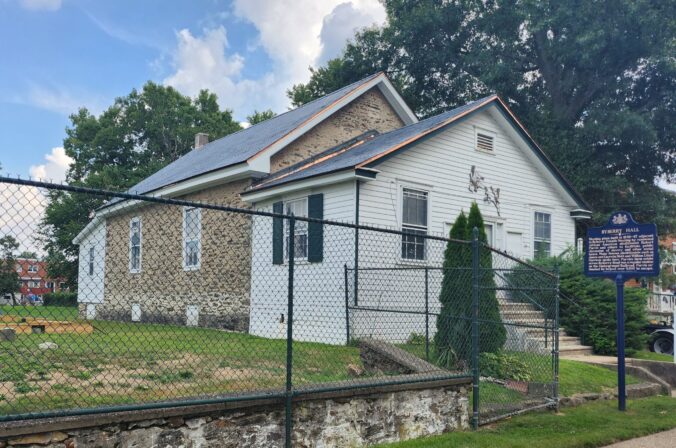We are often contacted by Pennsylvanians looking for assistance to help them preserve a historic place of worship in their community. When I learned of this new program by Partners for Sacred Places, I asked Emily Sajdak, Partners Director of Rural Initiatives, to provide our readers with some information about this opportunity. I’m happy to share the following…
Category: Preservation Partners (Page 1 of 27)
On large stained and moss-covered stone masonry abutments over a single line of tracks in Tredyffrin Township, Chester County rested a dinosaur, a wrought iron relic of the past originally constructed to support the industry of a developing nation. Its appearance was worn and weathered from over 140 years of service.
Random holes and a mixed bag of fastener types and sizes littered the visible faces. The original railroad floor system was long gone and replaced with a timber vehicular deck. Its live load carrying capacity was a mere fraction of what it once was. However, under all of this rust was a diamond, a rare and complete example of a wrought iron pin-connected warren pony truss with built-up corrugated diagonal tension members, the last of its kind.
This is the story of relocation and reuse, adaptive reuse, of the last known remaining pin-connected wrought iron Warren pony truss in Pennsylvania – The Howellville Truss (2004RE01890).
October is Pennsylvania Archaeology Month! Every October, events and programs are held across Pennsylvania to celebrate the Commonwealth’s deep past.
PA SHPO partner agencies and organizations including the the Society for Pennsylvania Archaeology (SPA) and their local chapters, the Pennsylvania Archaeological Council (PAC), as well as local historical societies and universities, offer public archaeology programs for all ages to highlight their region’s archaeological and historical significance. We have a lot of announcements this year so here we go!
September is International Underground Railroad Month and this week’s post features the story of Robert Purvis and Byberry Hall.
In 1844, Robert Purvis, a prominent Black abolitionist and leading figure in the Underground Railroad in Philadelphia, moved with his wife Harriet and their children to Byberry, a rural village in the far northern part of Philadelphia County.
For the next 27 years, they helped make Byberry a center of abolition and Underground Railroad activity. In 1847, Robert and two others built Byberry Hall as a meeting place for discussion of anti-slavery and other social issues. The building is now a key site on the Poquessing Trail of History.
Long time blog readers may recall back in June of 2023, the PA SHPO announced the Certified Local Government (CLG) Grant recipients of our FY23 funding. These grants are intended to advance local historic preservation activities.
Railroads played a vital role in Pennsylvania’s economic development, particularly during the Industrial Revolution and beyond. They facilitated the transportation of goods, raw materials, and people, fostering industrial growth, urbanization, and the expansion of markets. The construction of railroads like the Beech Creek Railroad and the Buffalo, Rochester & Pittsburgh Railroad, that primarily transported coal and other materials to homes and factories throughout Pennsylvania, played a significant role in the industrialization of the state.
This is part of a biannual blog series highlighting the agreement documents executed by PA SHPO in accordance with Section 106 of the National Historic Preservation Act and its implementing regulations.
Partnership is often a key ingredient for a preservation outcome. The value of partnership and collaboration, the importance of preservation networks, and leveraging resources are all central ideas of Pennsylvania’s statewide historic preservation plan, Historic Preservation: The Keystone of Community. Continue reading
Preservation Pennsylvania’s statewide conference is back – in mini-form! – with Preservation Forward: A Statewide Heritage Gathering in Johnstown on June 1 & 2, 2025.
Earlier this month, PA SHPO staff made their annual trek to Washington, D.C. to meet with other SHPOs and preservationists from across the country as part of National Historic Preservation Advocacy Week.










Recent Comments